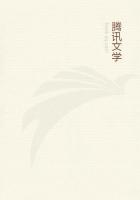The spine is always striped; the legs are generally barred; and the shoulder-stripe, which is sometimes double and sometimes treble, is common; the side of the face, moreover, is sometimes striped. The stripes are plainest in the foal; and sometimes quite disappear in old horses. Colonel Poole has seen both gray and bay Kattywar horses striped when first foaled. I have, also, reason to suspect, from information given me by Mr. W. W. Edwards, that with the English race-horse the spinal stripe is much commoner in the foal than in the full-grown animal. Without here entering on further details, I may state that I have collected cases of leg and shoulder stripes in horses of very different breeds, in various countries from Britain to Eastern China; and from Norway in the north to the Malay Archipelago in the south.
In all parts of the world these stripes occur far oftenest in duns and mouse-duns; by the term dun a large range of colour is included, from one between brown and black to a close approach to cream-colour.
I am aware that Colonel Hamilton Smith, who has written on this subject, believes that the several breeds of the horse have descended from several aboriginal species one of which, the dun, was striped; and that the above-described appearances are all due to ancient crosses with the dun stock. But I am not at all satisfied with this theory, and should be loth to apply it to breeds so distinct as the heavy Belgian cart-horse, Welch ponies, cobs, the lanky Kattywar race, &c., inhabiting the most distant parts of the world.
Now let us turn to the effects of crossing the several species of the horse-genus. Rollin asserts, that the common mule from the ass and horse is particularly apt to have bars on its legs. I once saw a mule with its legs so much striped that any one at first would have thought that it must have been the product of a zebra; and Mr. W. C. Martin, in his excellent treatise on the horse, has given a figure of a similar mule. In four coloured drawings, which I have seen, of hybrids between the ass and zebra, the legs were much more plainly barred than the rest of the body; and in one of them there was a double shoulder-stripe. In Lord Moreton's famous hybrid from a chestnut mare and male quagga, the hybrid, and even the pure offspring subsequently produced from the mare by a black Arabian sire, were much more plainly barred across the legs than is even the pure quagga. Lastly, and this is another most remarkable case, a hybrid has been figured by Dr Gray (and he informs me that he knows of a second case) from the ass and the hemionus; and this hybrid, though the ass seldom has stripes on its legs and the hemionus has none and has not even a shoulder-stripe, nevertheless had all four legs barred, and had three short shoulder-stripes, like those on the dun Welch pony, and even had some zebra-like stripes on the sides of its face. With respect to this last fact, I was so convinced that not even a stripe of colour appears from what would commonly be called an accident, that I was led solely from the occurrence of the face-stripes on this hybrid from the ass and hemionus, to ask Colonel Poole whether such face-stripes ever occur in the eminently striped Kattywar breed of horses, and was, as we have seen, answered in the affirmative.
What now are we to say to these several facts? We see several very distinct species of the horse-genus becoming, by ****** variation, striped on the legs like a zebra, or striped on the shoulders like an ass. In the horse we see this tendency strong whenever a dun tint appears a tint which approaches to that of the general colouring of the other species of the genus. The appearance of the stripes is not accompanied by any change of form or by any other new character. We see this tendency to become striped most strongly displayed in hybrids from between several of the most distinct species.
Now observe the case of the several breeds of pigeons: they are descended from a pigeon (including two or three sub-species or geographical races)of a bluish colour, with certain bars and other marks; and when any breed assumes by ****** variation a bluish tint, these bars and other marks invariably reappear; but without any other change of form or character. When the oldest and truest breeds of various colours are crossed, we see a strong tendency for the blue tint and bars and marks to reappear in the mongrels. I have stated that the most probable hypothesis to account for the reappearance of very ancient characters, is that there is a tendency in the young of each successive generation to produce the long-lost character, and that this tendency, from unknown causes, sometimes prevails. And we have just seen that in several species of the horse-genus the stripes are either plainer or appear more commonly in the young than in the old. Call the breeds of pigeons, some of which have bred true for centuries, species;and how exactly parallel is the case with that of the species of the horse-genus!
For myself, I venture confidently to look back thousands on thousands of generations, and I see an animal striped like a zebra, but perhaps otherwise very differently constructed, the common parent of our domestic horse, whether or not it be descended from one or more wild stocks, of the ass, the hemionus, quagga, and zebra.
He who believes that each equine species was independently created, will, I presume, assert that each species has been created with a tendency to vary, both under nature and under domestication, in this particular manner, so as often to become striped like other species of the genus;and that each has been created with a strong tendency, when crossed with species inhabiting distant quarters of the world, to produce hybrids resembling in their stripes, not their own parents, but other species of the genus.















